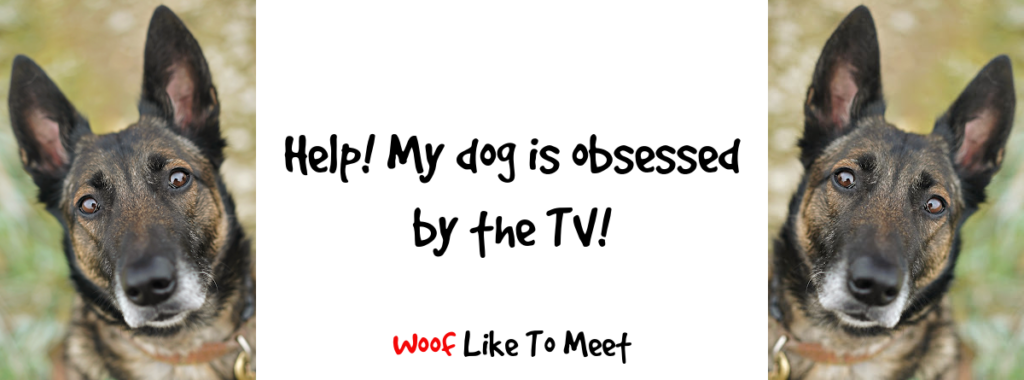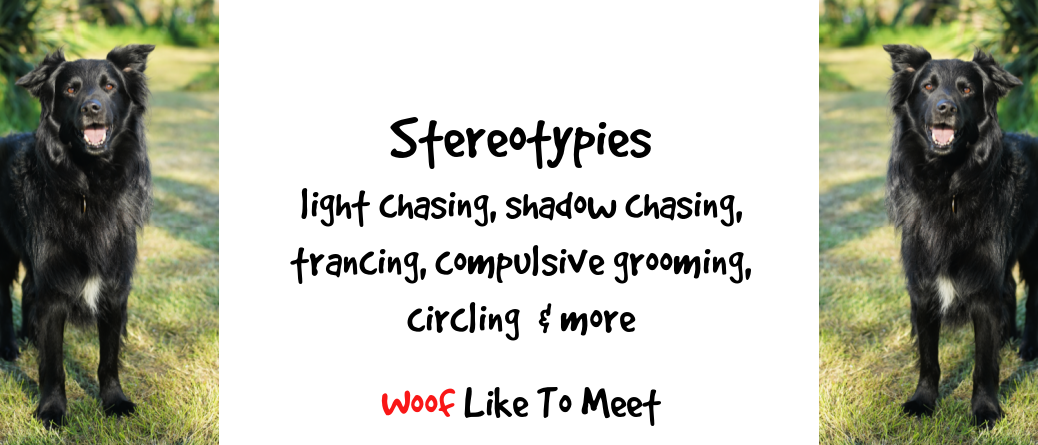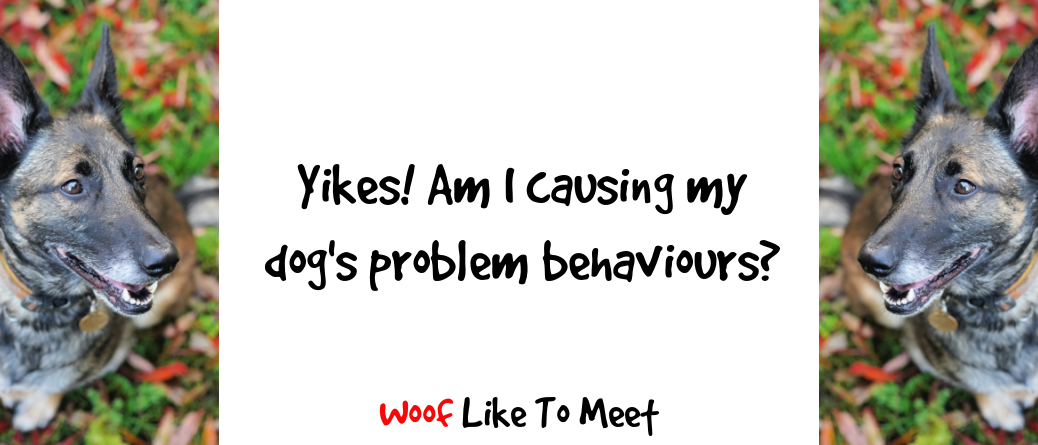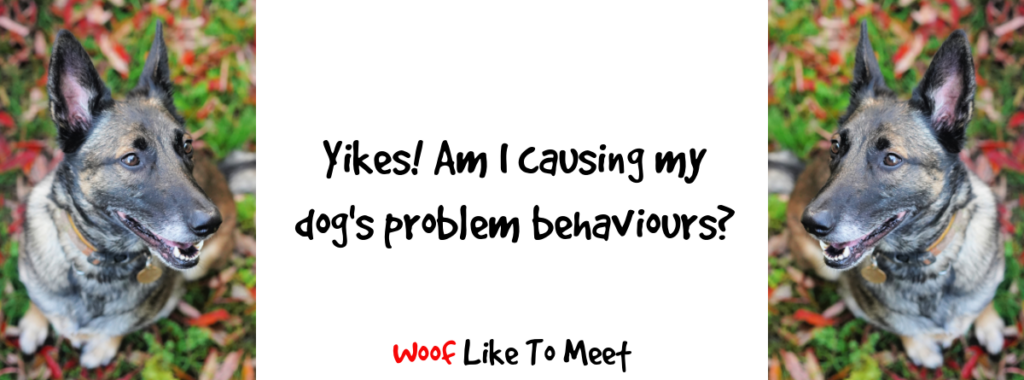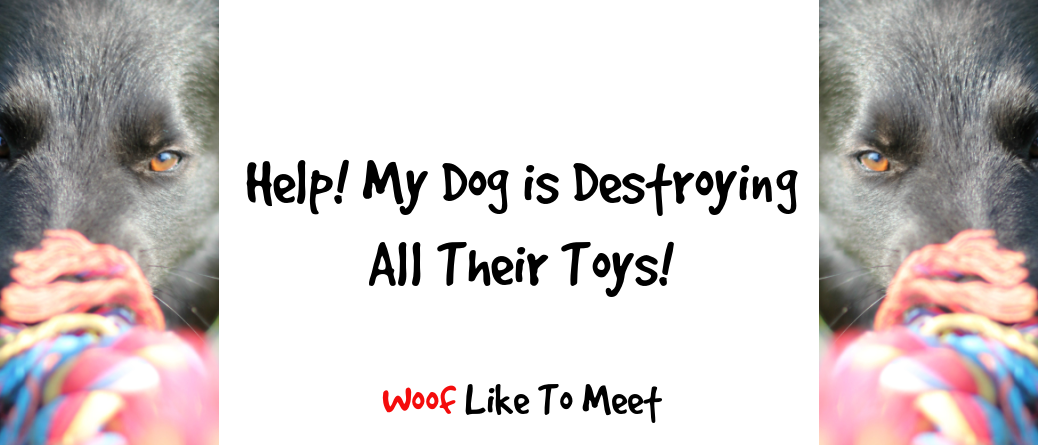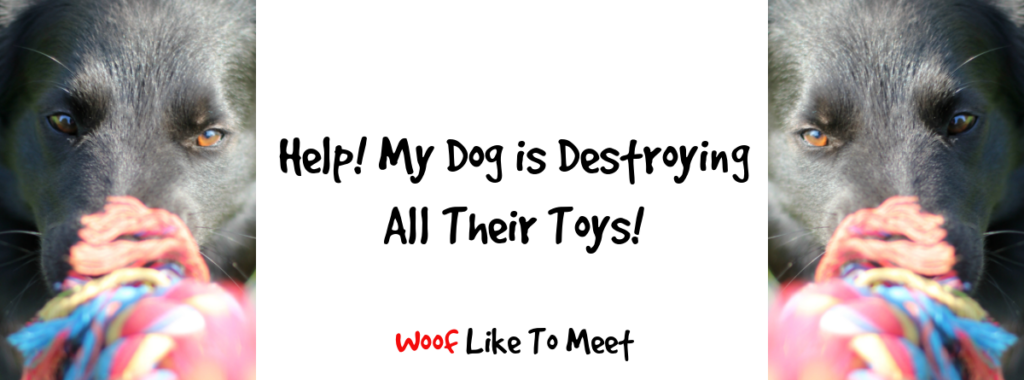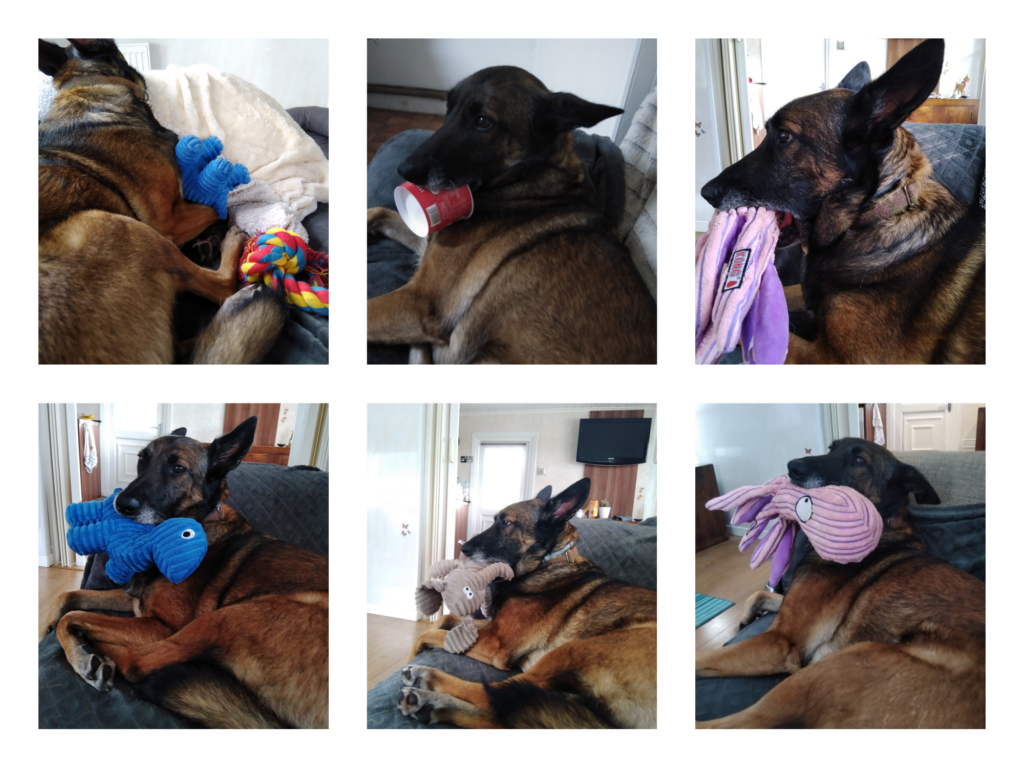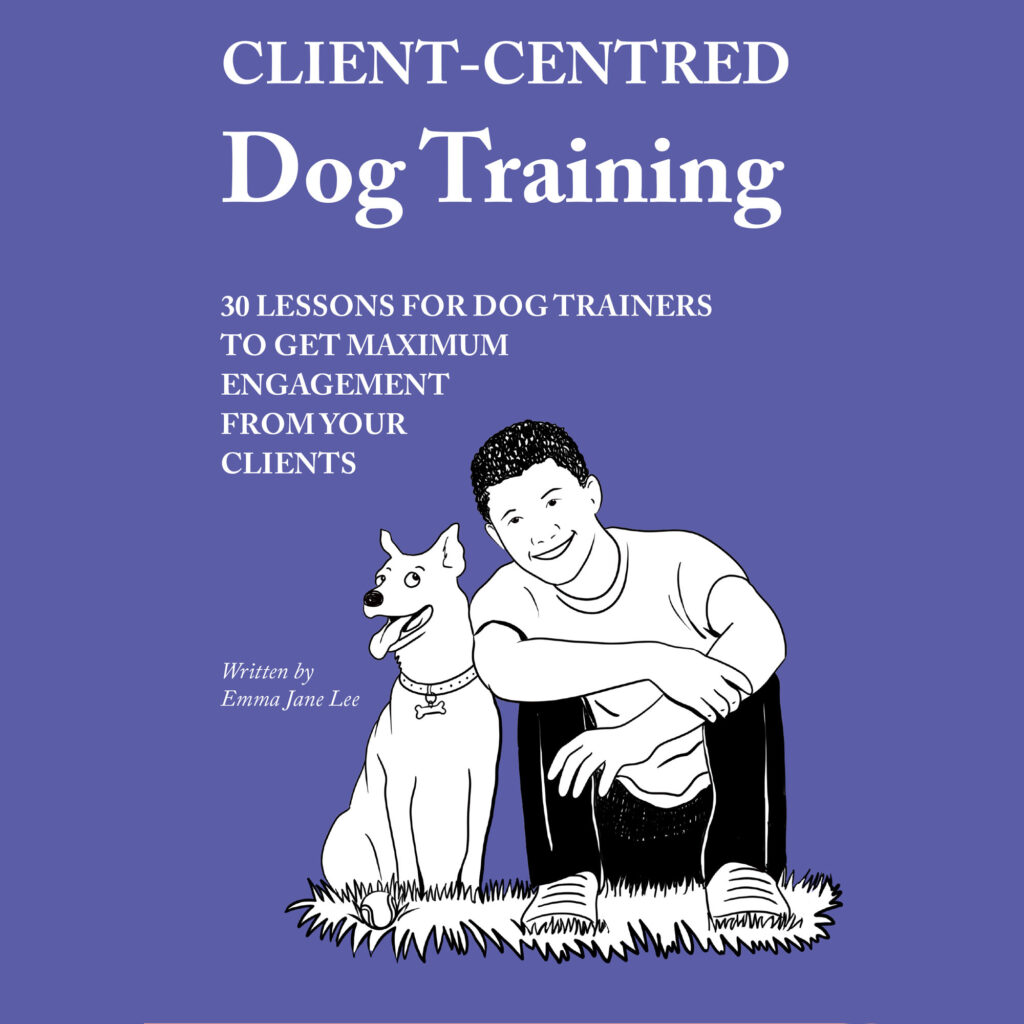From time to time, I get clients whose dogs have problems with the TV. Sometimes that can be startling when there are loud noises, but more often, it’s either chase-related behaviours or frustration-related behaviours when your dog sees or hears an animal on the screen. For instance, they may not simply be watching what’s going on, they may be trying to catch any dog that comes on screen, or they might go nuts if they hear a dog on screen. Other animals might also trigger these responses. Some dogs may try to catch the offending animal, especially if the animal moves quickly. Other dogs may bark, circle or even spin.
This behaviour cause you issues if your dog isn’t simply keeping a beady eye on the criminals in Inspector Montalbano. If your dog’s at risk of knocking all the ornaments over, smashing the TV screen or making it impossible to watch your favourite TV programmes, then you might be at your wits’ end.
So what can you do about it? Here I’m going to focus on the common trigger of dogs barking on audio or visual material. What I do is just an example and you can do the exact same thing for whatever your dog’s triggers are.
#1 Understand the exact nature of the problem
The first thing is understand the behaviour. This doesn’t mean you have to let your dog continue barking just because a dog’s barked on screen or trying to catch animals on the screen, but it does mean having a really good think about the kind of things you know cause an issue.
Make a list of the things your dog does and what sets it off.
The first thing to start with is the species. For instance, if your dog only reacts to other dogs, that’s some small win. There are dogs who can’t cope with any animal or human at all on screen. Don’t forget to also include things mechanical moving objects or the bouncing ball over karaoke lyrics. Make a list of all the things your dog responds to.
I don’t have dogs who are bothered by the TV, mainly because I don’t watch TV. But just because they don’t bat an eyelid to dogs barking on the radio or on the computer doesn’t mean they don’t respond to things. Lidy doesn’t respond to a single noise on the computer or radio. Heston sometimes has a curious head tilt when there are particular animal sounds. I took this video when I was trying to narrow down exactly what set off his head tilt reaction. Birds and wild animals definitely do it for him. As you can see, though, he’s clearly listening but he’s also not that bothered.
Once you have your list of all the species or objects that trigger your dog’s responses, you should also note whether or not it’s sound or vision that sets your dog off. It may sound odd, but there are dogs who can distinguish between ‘real’ sounds on TV, computer, phone or radio and ‘fake’ sounds. If your dog only sometimes reacts, it’s worth testing it with the different kinds of things. For instance, as you’ll see from the two videos that follow, Lidy (and Heston) both recognise the sounds of real dogs barking in real life but do not react at all to the sounds of real dogs barking on the computer screen or on the TV, or to the sound of fake dogs barking. It’s worth knowing these things. One thing that’s it’s useful to know that for is because there are differences between recordings and the pitch and so on – way more sound techy than I am capable of understanding or explaining – and if I need to work on both because my dog responds to both, that’s fine, but I also need to understand they are different and dogs recognise that. If I were, for instance, working on the sound of fireworks in real life, using recordings to desensitise the dog just might not cut the mustard. It’s the same here.
Understanding the sensory channels that your dog responds to, the species they respond to and whether it is sound or motion or both is important for what you will do to treat the problem. If you’re not sure, put the TV on mute and see how your dog copes, assuming that the behaviour isn’t too distressing or dangerous.
Play a recorded clip where the species or object in question comes up about 15 minutes or so into the programme. The reason for this is that you want to be able to settle yourself down and pretend everything is normal. If you’re watching your dog for a reaction, your own behaviour may influence what the dog does. If you’re pressing the remote or a button, then that might also trigger your dog that you’re doing something differently. For instance, I know a very specific episode of Engrenages which I have on DVD where there is a dog barking, and nothing else in the rest of the episode. I can work out when that dog comes on, note the time and press play. I should be able to mute the TV when the barking starts in order to identify if it is the barking or not.
Not a twitch to the recorded sound of two spaniels playing. I’d also need to rule out dogs barking for alarm – just because it may be that my dogs are sensitive to one type of barking and not others. This is the same for all triggers. Has your dog generalised, or is it very specific behaviour to very, very specific triggers? Can they cope with static sheep but not moving sheep? Can they cope with sheep but not cows? Can they cope with black or brown sheep moving but not white? Can they cope with sheep baaing but not sheep moving?
These triggers or releasing mechanisms can be oddly specific. Lots of work done on animal behaviour has shown us just how specific, from the red spot on a stickleback that causes territorial aggression in other stickleback to the head of a female turkey that causes male turkeys to start getting ready for mating, even if the head isn’t moving and is just a dead head on a stick.
The more you know about the specifics of your dog’s triggers, the more successful you will be at changing them.
If your dog can’t cope with the sight of the species on screen, you should also rule out the speed of the animal. For instance, what happens when you play the clip at quarter speed, or if you speed it up? Some dogs may react to simply the sight of the squirrel or whatever on the screen. Other dogs may need it to be moving. If your dog needs the animal to be moving before they really get interested, then at what speed? We can mess around with our amazing TV’s frames-per-second speed. Does your dog still do it if the trigger moves at half speed? At quarter speed? At an eighth normal speed? At one frame per second? I’ve rarely seen a dog respond to the static image of the trigger, for example.
Remember to space out your trials over a few days so that you aren’t just setting your dog up to react. Unless it’s dangerous or compulsive, the more time you can take to really get to know your dog’s problem, the less you’ll have to do to sort it out.
If your dog is happily coping with Crufts without the sound on, no matter how fast the dogs are moving around the ring, if they’re happily coping with the protection dog sniffing out drugs on Engrenages until you put the sound back on, that tells you vital information about which sensory pathway you need to work on.
If your dog is coping with the sheep on Spring Watch when the TV is on pause, but then can’t cope at quarter speed, that tells you useful information. It tells you that it’s not the sight of the animal, it’s the movement of the animal (or the bike, car, fire engine…) It also tells you the speed at which your dog can’t cope, which is also really useful information for the training plan.
If it’s a particular TV programme or advertisement that always triggers their behaviour, which species is causing the problem? Bear in mind that could be humans, dogs, cats, wildlife, livestock, mechanical moving objects like bicycles or cars, or even just simply anything that moves on the screen.
If your dog is happy with all moving animals they can see, but just can’t cope with the sound, then you probably find your dogs are barking if they hear that particular sound if you’re playing something on your phone or on the radio.
It can, of course, be all those things.
#2 Understand what the dog does when you aren’t there
Unless you have a dog with separation-related behaviour, there’s a really important rule out to do – one that most people don’t even think about…
What does the dog do when you aren’t there?
The reason we need to find out this information is because sometimes our attention or our interaction can be contributing to the dog’s response. None of us like to think that our behaviour is contributing to what our dog does. We don’t have to have laughed at Fido ‘joining in’ with the agility dogs at Crufts, and we don’t have to have responded positively. The sad fact is that computers, tablets, phones and TVs take our attention away from the dog and whenever they respond to certain things that they’re probably already sensitive about, it can really contribute to their behaviour.
You need to know that this is happening, and to what extent.
There’s a simple reason for this. If your dog is happy to hear the trigger on the radio or see the trigger on the TV when you are not there, well, the behaviour is a very effective way of getting your attention. We may not think that shouting ‘Get down, Rover!’ is particularly reinforcing, but if the dog has found it to be a useful way to break the TV’s captive hold over us and cause us to interact with them, it’s likely to be a behaviour that is going to happen again and again.
Usually, either the behaviour is exactly the same or it’s a bit milder. It’s very infrequent that I see the dog never do this behaviour at all… but you need to know.
Why you need to know is that it will help you design your treatment plan. If your dog’s behaviour is in any way influenced by YOUR behaviour, you’ll need to account for that in what you do.
#3 Decide if it’s more Pavlov or more Skinner
Generally speaking, we might think of this behaviour as a Pavlovian responsive one: the dog sees or hears the trigger and then they perform the behaviour. Just like Pavlov with his sounds and salivation, we might think of this as triggering a behaviour.
Literally as I typed these words, a little dog barked outside. I’m going to assume it was a shih tzu as we are surrounded by barky shih tzus. All small dogs are shih tzus, aren’t they?
What you see in this video is Lidy notice the sound. Full malinois radar ears. Her face is pointed in the direction of the sound. When she looks to me, because dogs do look to us to see what we’re doing, I tell her she’s a good girl, because she didn’t bark or respond, even though she very clearly heard the dog. The dog triggered a response in her.
Another bit of Pavlov at work… As soon as I tell her she’s a good girl, you see her relax. Her ears go back, she gets off the couch, she shakes off. Shake offs are possibly a way of dispersing adrenaline after a stressful experience. She licks her mouth. She yawns. She shakes off again. All beautiful, beautiful canine body language showing that, if I hadn’t guessed it, hearing those grumpy shih tzus barking was stressful for her.
Along comes Heston. Bear in mind these are two guarding breeds. Heston has a spectacular bark. Did he hear the shih tzu? I don’t know. Did he hear me? Maybe. Did he hear Lidy shake off? Definitely. What happens when dogs bark and we are very good dogs who don’t join in?
We get food. Skinner. And a bit Pavlov. We go to the kitchen and we get snacks. You’ll see this is the result of my alert and alarm barking protocol. I just literally finished watching Kathy Sdao’s excellent (as always!) presentation at Mike Shikashio’s Aggressive Dogs conference this weekend, where she talks about turning triggers into cues for behaviour… this is a living example of what I take her to mean. Dogs bark. We go to the kitchen. We get snacks.
We haven’t completely left Pavlov behind. How does Heston feel about dogs barking, would you say? Loose, open mouth, tongue in situ, bottom teeth visible, soft eyes, low & slow wagging tail, the little circle… I wouldn’t go as far as saying my dogs feel happy about other dogs barking. But they know exactly where to go, exactly where the good stuff is and exactly what happens next.
Triggers > responses
Cues > behaviours > consequences.
Some people might think there’s little difference between a trigger and a cue. As Kathy Sdao explained this weekend, a trigger releases a behaviour and we don’t largely have very much control over what we do next. We English-speaking individualists don’t like to think that we human beings are at the beck and call of the world around us, but largely, when a trigger happens, we respond.
Cues, on the other hand, involve choice. They say that reinforcement (in this case interaction from me and best quality freeze-dried lambs’ lungs) is available if you choose to do certain behaviours. Here, that’s if you’re quiet (or, at least, you stop when I say ‘thank you!) and you, in anticipation, move away from the sound (on the left of the camera) to the kitchen on the right, thus we’re using distance increasing behaviour too… slam dunk of potential reinforcers: increase distance, feel safer, have interaction with the group, get biscuits, have a choice over behaviour, remember our agency.
There’s really no difference between Lidy alerting to the dog outside and a dog alerting to another dog on a YouTube clip… it’s all simply Pavlov (stimulus > response) or Skinner (behaviour > consequence)
But it does help if you have an understanding of how much. Going back to step 1 and 2, we can begin to unpick whether the behaviour is being reinforced by something.
Sometimes that’s sensory stimulation. It feels fun to chase stuff. Sometimes that’s the ability to practise breed-specific behaviours. If you don’t want a dog who barks at things, don’t get a dog known for guarding behaviours. If you don’t want a dog who likes to visually chase things, don’t get a sighthound, herding breed or a gundog. If you don’t want a dog who sings to Pavarotti, don’t get a vocal breed like a husky who enjoys a bit of a chorus when they hear sirens or dogs howling.
Other times, that reinforcement comes from us. You’ll know this if you did #2. You might wonder if the dog is simply reacting to threat because they’re protecting you. It’s a possibility although it’s rare. If you notice your dog doesn’t growl or bark as much when you’re not present for the sound or the sight of a dog or human you may want to rule this out. Livestock guardian breeds and mainland European herding dogs selected to protect the flock are two types of dog who might tend towards protection and, if you’re not there, it might not be your attention that’s fuelling the behaviour, but your presence. Alternatively, your presence might just be bolstering the dog’s confidence and you might see your dog growling or barking at the noise of ‘intruder’ dogs or humans when you’re present simply because your presence boosts their confidence.
If it’s mostly Pavlov (trigger > behaviour) and it’s not giving the dog much opportunity to express breed-specific behaviours, to be a dog, to get sensory stimulation or to get attention or interaction from us, this will alter the balance of your training programme.
#4 If it’s more Pavlov or emotional response…
This is because your dog has become sensitised or sensitive to the trigger. The sound or sight has become more salient or significant. For instance, my next-door-neighbour has just started up their very throaty car and Lidy opened her eyes. Heston did not. But she’s not on alert as she was in the video.
We hear and see things all the time that our brain has become habituated to. It’s normal. We carry on with whatever we’re doing, just as I’ve become habituated to the sound of the fridge and the level of light in the room. When we sensitise to something, it becomes more noticeable or salient.
The way to approach respondent behaviours like these is through desensitisation.
For this you need a specific desensitisation plan which a good trainer or behaviour consultant can help you construct.
Systematic desensitisation consists of two important parts.
The first of those is a stimulus gradient, which means starting with the smallest shaving of a trigger that you can manage where your dog is under threshold and building up as your dog learns to cope to the strongest stimulus.
The second part of systematic desensitisation is pairing the stimulus with relaxation, meaning that the dog needs to be chilled out. This doesn’t mean they’re distracted. It means they notice the stimulus but it will be paired by a state of relaxation.
If your dog is responding to the noise, then you will do something to elicit a state of calmness, like just having a chill out on the couch. Your first goal is to present the barking for as short a sliver of time as your dog can cope with – perhaps even one single back at 10% volume on your phone. If you need to, get someone else further away playing the sound. You don’t need food or anything for desensitisation because the bark or the triggering noise should be paired up with relaxation.
Say, for instance, your dog is triggered by the sound of a specific advert. As soon as the advert starts, the dog is waiting for whatever trigger in the advert, be it a car horn or a cat or a dog moving on screen. You may decide to start with the sound. Getting the advert on your phone and playing the first three or four notes is one way to start desensitising your dog to a very specific target.
If you’re wondering how to desensitise your dog to the sight of squirrels or sheep or dogs on television, use a pre-recorded programme where you know at what point the trigger appears. You can press pause and click on remote features to slow down the programme, even if you’re going frame by frame. Perhaps your dog will only cope with two frames before you skip five minutes and continue. Remember not to use the remote only at that period of time otherwise it’s quite likely the dog will pick up on that. Similarly if you’re tapping your phone and a dog barks… don’t let your behaviour with a remote or a control become a substitute trigger.
#5 If it’s more Skinner than Pavlov
The first thing your dog might be doing is rehearsing some innate behaviour for a) dogs or b) their breed. If you’ve got a collie or other kind of herding or droving dog, it’s not unusual that they’ll find the television both stimulating and frustrating. It’s visual stimulation that awakens their need to control movement, and it’s frustrating because they don’t have any control over the triggers on screen. I say triggers here, because motor patterns like these are arguably scratching some deep Pavlovian releasing mechanism: stuff moves, I must control the stuff. It’s more Pavlov than Skinner.
Yet, because they cannot understand that they are in fact unable to control the movement of the creature, it becomes superstitious. By that, I mean that they feel like they need to do the behaviour to get the thing to stop moving. If the thing doesn’t stop moving, they’re going to keep on behaving until it either stops or goes off screen. Whether the dog thinks that they have actually been successful is anyone’s guess. It doesn’t matter.
It’s not just about chasing and moving. It’s also about dogs bred to guard things. Whether you’ve got a mastiff breed, a livestock guardian breed or a mainland European dual-purpose herding and protection breed like a Dutch shepherd, German shepherd, Beauceron, Briard or Belgian shepherd, you’ve got dogs who may take the noise or appearance of a dog or human as an intruder and feel the need to bark at them. It’s not a surprise to find Malinois and German shepherds with some pretty suspicious behaviour around triggers.
Likewise with Asiatic breeds, ancient breeds and terriers, you’ve got dogs who can be aroused by movement and frustrated because they can’t control it.
This takes a dual pronged approach.
On the one hand, desensitisation will work. Desensitisation is crucial for both excitement and fear. Relaxed states, controlled triggers and very small doses in a gradual gradient are your friends here. Break the link between the thing and the need to perform the behaviour.
On the other, these are deeply reinforcing behaviours for dogs and we need to think about their welfare. A heavy enrichment programme that’s very much focused on your dog’s dog and breed needs is going to help scratch that itch. Like other behaviours, though, don’t build up their coping mechanisms for that one simple behaviour: build a dog who isn’t relying on that one behaviour to get their kicks. Scentwork, nosework, trailing, mantrailing, snufflemats, scatter feeding and lots of nose stuff can build up the nose as the primary sensory muscle, not eyes or ears. Give your dog mental stimuation and help them control their impulses through training. Also teach them to cope with frustration. Meet the dog’s needs first and foremost. Allie Bender and Emily Strong’s amazing book Canine Enrichment for the Real World will help with that.
Meet your dog’s needs and you may find that you’re having to deal with fewer and fewer incidents where they’re meeting their own needs.
Likewise, if your dog is aroused all the time, then you may need to do a bit of work here. Sometimes this is age-related. Teenagers are learning what floats their boats and how to meet their own needs. I wouldn’t hope they’ll grow out of it. It’s vital that you put steps into place to help desensitise them and also meet their needs productively.
Anxious dogs or fearful dogs may well benefit from the addition of behavioural medications from your vet if this behaviour is part of a suite of behaviours. Be conscious that you will still need to put behaviour programmes into place: medication does not teach your dog how to cope. Unless they’re supposed to spend the rest of their life medicated, then you’ll eventually have to teach them anyway. Medication for anxious, spooky or fearful dogs may help behaviour modification work faster at the beginning, though there’s no evidence it actually works better in the long run.
If you realise that your own behaviour cues your dog, as well you might, then you’ll also have to work on your own relationship with your dog and – dare I say it – dial back on the television for a bit and put your relationship with your dog first for a while. Of course, you can do both – many of us manage to watch TV while the dog is having a massage or being stroked. Teach your dog how to get your attention whenever they need it – especially if they’re aroused – and always give them what they need for a while, then gradually teach them that it’s enough. By gradually, I mean over months, not weeks. You should also ignore your dog’s behaviour if they bark at the TV. Get up, walk out, call the dog, give them something to do instead, come back with them, carry on. Reinforce non-responsive behaviours (just like my alert and alarm programme) and you should see the behaviour diminish because you’re meeting your dog’s need for contact as well shaping the kind of behaviours that work rather than the ones that don’t.
#6 Manage the environment
Unless you plan on quitting TV for good (highly recommended anyway!) you probably plan on watching something at some point. Training a dog through a careful systematic desensitisation programme with a trainer or behaviour consultant may take from three to twelve weeks depending on a number of factors, like the severity of the behaviour and how long the dog has been practising.
While you’re training, you will need to put a stop to triggers. That may mean listening to everything through headphones if your dog is triggered by noises. That may mean watching things on your laptop, phone or tablet for a few weeks and also using headphones.
If your dog is triggered by very specific things, its worthwhile finding a couple of films or repeated videos where you can guarantee that there is nothing in there that will trigger your dog. I mean 100% guarantee. Playing these on repeat during the times you’d usually watch TV will also desensitise your dog so that they’re less alert. It’s not simply a matter of never playing anything on TV for a few weeks and then putting the TV back on again. Your dog will go right back to where they started. You want to normalise TV and stop them watching out for stuff.
You may of course have dogs who can easily be distracted. Neither of mine would notice a bomb explosion if they have their snuffle mats, wobblers, Kongs and a silicone snake. If I truly struggled watching things and I wanted peace and quiet, then distraction may work.
If your dog is used to your absence within the house, there’s no reason you couldn’t watch in a room where they’re not present if you absolutely needed to. If your dog sleeps in the lounge and they don’t normally react if you’re watching things in bed, there’s no reason to disrupt that habit. If you’re really, truly struggling with not being able to watch your favourite shows for six weeks and run some trigger-free video instead, it may be time to admit you have a problem yourself and find a solution. Again, this is not to say that the TV goes off and stays off for however long. You’ll need it on otherwise the moment you put it back on, you’ll soon realise that your dog has actually become more sensitive during the hiatus. You’ll need to transition back to full strength TV gradually as you blend your desensitisation programme into real life once more.
In conclusion:
- understand whether it’s visual, auditory or both
- really get to grips with the specificity of those triggers
- eliminate your own reactions or presence as the reason behind the behaviour
- create a gradual stimulus gradient
- manage your dog’s behaviour and their exposure to sounds and sights while you re-teach your dog
- check in with a vet if your dog is highly impulsive, highly predatory or particularly anxious or fearful and get medication on board from the beginning if necessary
- if your dog is older or larger and your dog seems to be particularly sensitive to sounds or their behaviour has intensified, it’s worth asking the vet to check for musculoskeletal problems since sound sensitivity has been repeatedly linked to musculoskeletal pain
- consider teaching some simple impulse control games and some frustration tolerance
- add in species-specific and breed-specific enrichment to give your dog an outlet for their needs
- add in a wider repertoire of enrichment for your dog so they aren’t just reliant on one type of reinforcement
- implement a systematic desensitisation programme based on your dog’s needs and using the sensory channel that they’re sensitive to
Final plug: if you’re a dog trainer and you are looking to move from compliance models with your clients to a more cooperative way of working, this should help you make the shift:
Available on Amazon in paperback and ebook.


